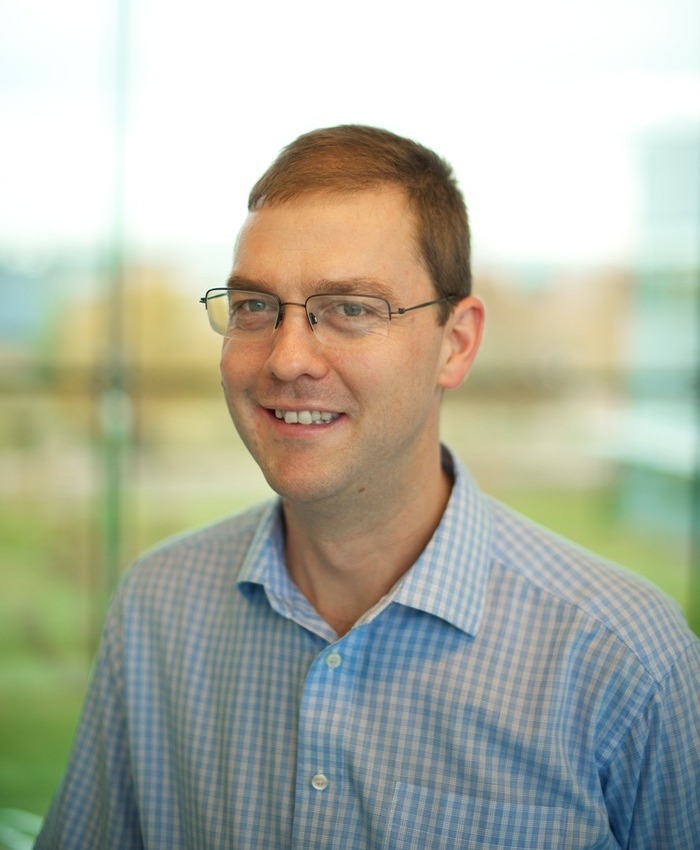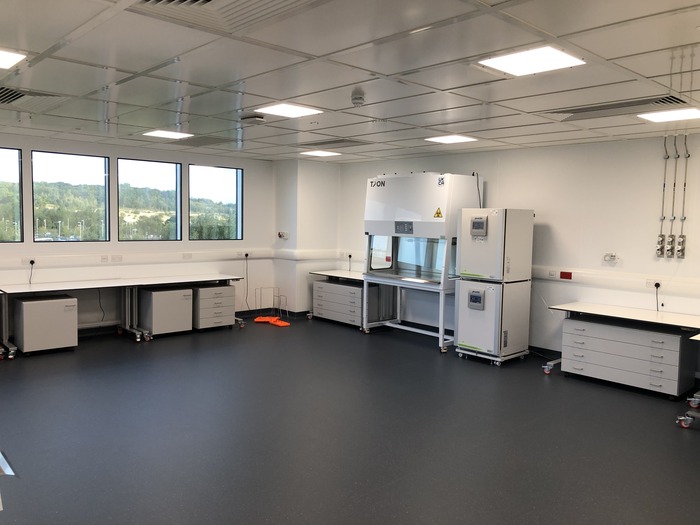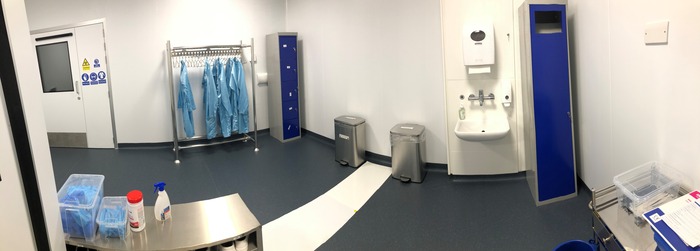Expertise from the University of East Anglia (UEA) has helped the Cell and Gene Therapy Catapult (CGT Catapult) to develop the UK’s first accessible laboratory for the advanced therapy industry.
In this interview, Dr Chris Van Der Walle, Edinburgh Centre Director at CGT Catapult, shares the motivation behind their new ‘Universal Design’ Laboratory and how this project came to life through a collaboration with UEA.

Can you provide some background to this project? Why did the Cell and Gene Therapy Catapult want to build this new lab?
“At the Cell and Gene Therapy Catapult, we are committed to creating opportunities for more scientists living with disabilities to take up careers in the cell and gene therapy industry. This means that, when developing our new cell and gene therapy laboratories in Edinburgh, we were keen to follow the principles of ‘Universal Design’, making the facilities accessible to scientists regardless of age, disability or other factors.
“The cleanroom provides an aseptic environment where scientists can develop advanced therapy medicinal products. There is also a changing room next to it, where staff can change into cleanroom garments.
“To succeed in developing the UK’s first accessible advanced therapy laboratory cleanroom facility, it was clear that we would need a bespoke design.”
How did you work with UEA on this project?
“Traditionally, laboratory cleanrooms have not been accessible to scientists with disabilities, including wheelchair users, so we decided to bring in external expertise to help us with the project. I reached out to Dr Katherine Deane from UEA after being advised that she was the ‘go-to’ expert in this area. It was clear straight away that I was speaking to the right person for improving accessibility in laboratory settings and given Dr Deane’s impressive record in this area, the prospect of working together on this project was very exciting. Dr Deane had played a key role in the development of UEA’s own New Science Building*, which opened in 2019 and is the most accessible university science and learning building in the UK by a long way.
“Dr Deane carried out consultancy work with us and advised us on the design of our new ‘Universal Design’ Laboratory – including ensuring that there is sufficient space for a wheelchair user to change into a dedicated clean wheelchair for the laboratory environment. It’s clear that consideration of all the details makes a huge difference – such as considering the colour contrasts within the lab for people with a visual impairment and ensuring the taps for sinks were either lever-type or touch-free type. Dr Deane also had invaluable advice about having adjustable benches and installing additional powered doors to make the route to the lab fully accessible. It was important to us to include in the initial laboratory fit-out as many of these universal design features as possible since retro-fitting them later is more complex and costly.”
 The UK’s first accessible laboratory for the advanced therapy industry.
The UK’s first accessible laboratory for the advanced therapy industry.
 The Change room for the new Universal Design Laboratory.
The Change room for the new Universal Design Laboratory.
What are your hopes for future lab accessibility in the UK?
“Accessibility is about much more than just meeting minimum building standards. In laboratory settings, these standards don’t go far enough and so there are not enough opportunities for scientists with disabilities. With this in mind, we are extremely proud to have developed a laboratory where scientists with and without disabilities can work side by side.
“Our new Universal Design Lab offers proof of concept; we hope that it will pave the way for the development of future laboratories in the UK and beyond. With this in mind, we supported the generation of structural and equipment access guidance that can be read within UEA’s ‘Access All Areas in Labs’ project. The guidance shares important information on lab accessibility to promote best practice. You can find out more on the Access All Areas in Labs section of UEA’s website.”
* UEA’s New Science Building is one of the few buildings among UK universities to have a Changing Place accessible toilet facility for people unable to use standard accessible toilets, providing more space and equipment, including a height adjustable changing bench and a hoist. Other features include a ramped entrance, two disabled toilets on every floor, all laboratories being fully wheelchair accessible, hearing loops in every teaching space and all doors being motor assisted.
:focus(825x584:826x585))